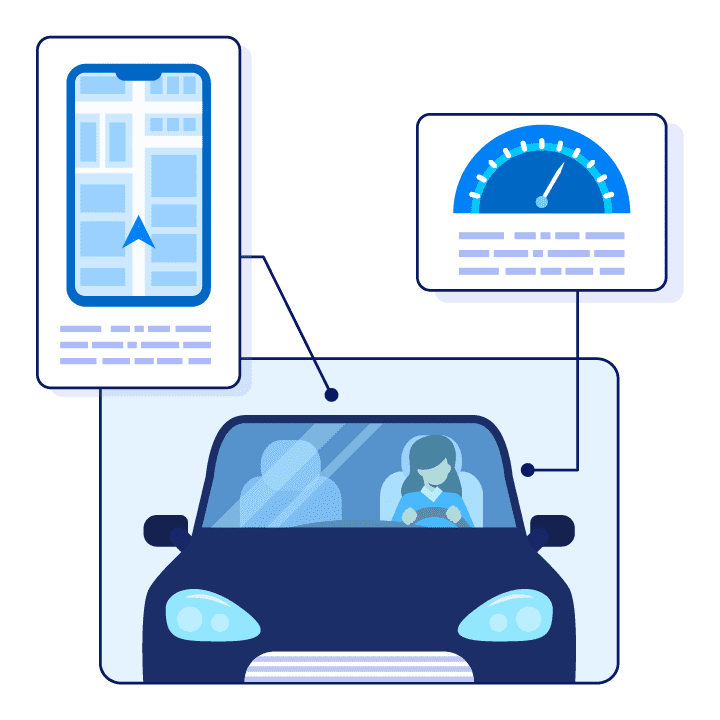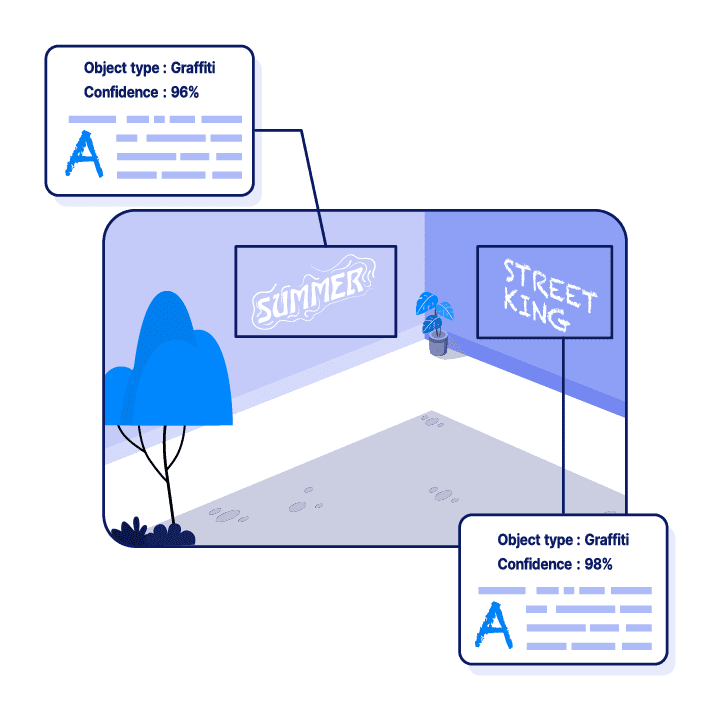Generative AI Development Company
What Our Customers Say
Our Awards and Recognition
We are honoured to receive industry accolades for our unwavering dedication to delivering exceptional AI services and software solutions.









Our Generative AI powered development services

Generative AI development
Once we identify the client's specific challenge, we proceed to develop a functional Generative AI product or service tailored to deliver the desired outputs. Leveraging a combination of cutting-edge technologies such as deep learning, probabilistic programming, NLP, and neural networks, we train and deploy the AI solution across multiple platforms.

Generative AI consulting
Our experienced team provides comprehensive consulting services to guide clients in selecting the most suitable generative AI solution for their unique requirements. Given the evolving nature of generative AI, there are various approaches to developing custom AI-powered solutions. We assist clients in understanding the most efficient, cost-effective, and low-maintenance solution for their needs.
Generative AI maintenance & support
We offer ongoing maintenance and support services for generative AI products. Our primary focus is to ensure the consistent delivery of high-quality content and the optimal functionality of AI models. Through continuous data and algorithm training, we ensure that the algorithms improve over time as they learn. Additionally, we promptly identify and resolve any issues or defects in the generated AI products to ensure smooth operations.
Generative AI integration and replication
Integrating generative artificial intelligence can help boost efficiency, improve client satisfaction, and save money. You can use it for numerous tasks, like predictive sales forecasting analytics, content production, and personalized product suggestions. As a generative AI development company, we excel in integrating and replicating generative AI models across diverse applications and ensure that the generated content meets your desired specifications.

Generative AI automation and optimization
With our generative AI automation and optimization services, we can help streamline your content generation processes and ensure efficient and effective content generation while freeing up valuable resources for other important tasks. By automating repetitive tasks and optimizing algorithms, we empower your systems to generate content at scale without compromising quality to ensure improved performance and quicker turnarounds.

Generative AI research and development
Stay ahead in the constantly evolving field of generative AI with our dedicated research and development services. We explore, experiment, test, and refine techniques to provide you with the latest advancements and solutions. When you partner with us, you get a dedicated generative AI development company that can help you harness the full potential of generative AI in your projects.
Benefits of employing our generative AI development services
Generative AI enables the generation of new and unique outputs, fostering creativity and innovation. It can generate novel designs, artwork, text, and more, providing businesses with fresh ideas and possibilities for product development and creative endeavours.

Generative AI can automate and streamline various processes, saving time and reducing costs. It can assist in tasks such as content generation, design prototyping, and data synthesis, accelerating workflows and eliminating the need for manual, time-consuming efforts.

Generative AI can provide valuable insights and predictions by analyzing vast amounts of data. It can help businesses make informed decisions, optimize strategies, and identify patterns or trends that may not be immediately apparent to human analysts, thus enabling data-driven decision-making.

Generative AI can create personalized experiences for customers by generating tailored recommendations, product suggestions, or customised content based on individual preferences and behaviour. This level of personalization can enhance customer engagement, satisfaction, and loyalty.
Generative AI use cases
01 —
Automated content creation and summarization
Streamline content creation by leveraging generative artificial intelligence to produce creative pieces, reports, and articles. The technology can also leverage deep learning to analyze data and output human-like text. Plus, it’s great for condensing huge amounts of information into concise and meaningful summaries.
02 —
Predictive modeling
Foresee trends and outcomes by harnessing the power of generative AI to develop robust predictive models, enabling improved business strategies and data-driven decision-making. By analyzing historical data and recognizing patterns, generative AI can facilitate proactive strategies and fuel innovation.
03 —
Process automation
Let generative AI handle complex tasks that traditionally require human intervention. By automating repetitive, rule-based workflows, you can reduce manual workload and operational costs. From generating documents to creating reports, generative AI streamlines processes, improves efficiency, and frees up human resources for more innovative tasks.
04 —
Personalization
Generative AI allows you to provide a more tailored user experience by generating personalized content, recommendations, and marketing messages based on individual behaviours and preferences. As a result, you enjoy better customer engagement, improved conversion rates, and better, long-lasting relationships with your users.
05 —
Language translation
Break down language barriers and open up new horizons for your business by leveraging generative AI for language translation. The technology’s language capabilities allow for context-aware and accurate translation services. And by understanding the nuances of language, it offers translations that capture not only the words but also the essence of the conversation.
06 —
Data augmentation
Synthetic data generated by generative AI can help you enhance and diversify your machine learning datasets, which, in turn, improves model performance and robustness and addresses challenges posed by limited data availability. The resulting model is then better equipped to make accurate predictions and handle real-world complexities.
Transforming industries with Generative AI
How we approach your Generative AI Project
By following this comprehensive approach, we ensure that your AI project receives meticulous attention at every step, leading to a successful outcome aligned with your goals and requirements.
Idea / problem validation:
Before we start working on anything, we validate your idea and make sure it aligns with your business goals, addresses the particular problem you’re trying to solve, and caters to your target audience.
Preparing requirements:
Next, we gather and analyze the project requirements and outline the project scope and deliverables to ensure successful implementation.
Data preparation / cleaning:
Our team of experts prepares and cleans data to ensure its accuracy, reliability, suitability, and quality, and optimize it for training the AI model.
Selecting appropriate technology and model:
Based on the project needs, we leverage our expertise to select the technology stack and AI model. We ensure that it’s suitable for your project’s unique requirements and can optimize performance.
Designing the software architecture:
With scalability and robustness in mind, our team designs the software architecture and ensures seamless integration of the intelligent software with your existing system.
Define evaluation metrics:
We define precise performance evaluation metrics so that we can keep an eye on the software’s effectiveness and accuracy and ensure that it achieves the desired outcomes.
Development and testing:
Now that we have all the requirements and a plan in place, we start building the software. We establish continuous development and testing cycles to make sure we produce high-performing, bug-free software.
Deployment:
Once the software is thoroughly tested, we deploy it and integrate it into your existing infrastructure, and make sure that the launch is successful.
Support and maintenance:
Beyond deployment, we offer continuous support and maintenance to ensure there’s no problem so that your software continues to deliver optimal performance and stays up to date with the changing business landscape.
Our stack of Generative AI Tools
At AI Superior, we specialize in developing solutions grounded in cutting-edge technologies














Our success stories
The AI Superior team developed a web application that allows users to communicate with a Custom LLM through a chatbot interface. This innovation empowers organizations to establish private, hosted

Space exploration has always captured the attention of humanity. The pursuit to understand the cosmos, unravel its mysteries, and discover new frontiers is undeniably captivating, however, this journey is not without its challenges. The vastness of space, the harsh conditions, and the sheer distance from Earth have made space exploration a daunting endeavor.
However, with the latest advancements in artificial intelligence (AI), humanity has been able to push the boundaries of what’s possible in the final frontier. From autonomous rovers to data analysis and satellite operations, artificial intelligence is helping us understand the mysteries of our universe.
In this blog post, we’ll delve into the exciting world of AI in space exploration and discover how it’s shaping the future of interstellar discovery.
AI Superior was founded in 2019 in Darmstadt, Germany by Dr. Ivan Tankoyeu and Dr. Sergey Sukhanov. Fuelled by their deep expertise in artificial intelligence and a shared vision for its limitless possibilities, they created a company that delivers cutting-edge artificial intelligence services and software solutions. With a talented team and a customer-centric approach, AI Superior is empowering businesses worldwide with innovative AI technologies.











5 Ways AI Is Used in Space Exploration
Autonomous Rovers
AI is playing an increasingly important role in space exploration, primarily through the deployment of autonomous vehicles. Rovers like NASA’s Curiosity and Perseverance have been executing autonomous navigation missions across the Martian terrain for years. These rovers are equipped with sensors engineered to detect environmental hazards, including rocks, craters, and various terrain features. Subsequently, an AI-driven system analyzes the data to determine the best path forward, enabling the rovers to safely savigate the Martian landscape mitigating the risk of collisions. Furthermore, NASA’s Perseverance is equipped with AI software known as Autonomous Exploration for Gathering Increased Science (AEGIS). AEGIS enables the Perseverance to collect valuable data on the different types of rocks and other Martian features that it discovers while driving Mars surface. This capability, in turn, enables us to learn more about the composition of the planet.
Satellite Operations
Another way AI is revolutionizing space exploration is through satellites operations. AI can provide more efficient and rapid solutions for managing satellite operations, including critical collision-avoidance maneuvers. Take, for instance, SpaceX’s Starlink satellites, which leverage an autonomous collision avoidance system driven by AI. This system is designed to detect the presence of nearby orbital debris and other hazards in real-time and swiftly take evasive actions by adjusting the speed and trajectory of the satellite. These adaptive measures ensure that the satellite safely navigates its path, avoiding any collisions that could jeopardize its mission or the safety of other space assets.
Data Analysis
AI plays a pivotal role in data analysis within space exploration, offering more precise and efficient methods of analyzing data captured from space missions. Satellites, probes, and other space exploration tools capture and collect vast amounts of data and AI algorithms play a crucial role in analyzing and interpreting this data. Machine learning models, particularly, exhibit a remarkable ability to identify patterns, classify celestial objects, detect anomalies and even venture into the real of predictive analysis. By harnessing the power of AI, scientists can now unlock deeper insights from the cosmos and accelerate our understanding of the universe.
Rocket Landing
Rocket landing is a complex and critical aspect of space exploration. The safe and precise return of rockets to Earth or their controlled landing on other celestial bodies is essential for mission success. In recent years, the integration of artificial intelligence has significantly improved how rockets operate.
SpaceX, for instance, employs an A-driven system to analyze data from rocket’s sensors and cameras. This AI system then calculates and adjusts the rocket’s trajectory in real time, accounting for variables like wind and atmosphere, ensuring optimal landing positioning.
Galaxy Mapping
AI has ushered in a new era of precision in star and galaxy mapping, enabling astronomers to accurately identify stars and galaxies in space and even understand their physical properties (like mass and age) Through AI-based algorithms, astronomers can now detect, classify, and recognize patterns in star clusters that form distant nebulae and classify other features that are detected in deep space.
One example is NASA’s Kepler telescope which leverages AI to discern subtle dips in the light emitted by stars. These fluctuations indicate the presence of planets and help scientists identify the likely location of planets. AI’s predictive prowess can also be used to forecast the behavior of stars and galaxies over time, empowering scientists to gain invaluable insights that can be used for future mapping and exploration missions.
Conclusion
Artificial intelligence is transforming space exploration in ways previously thought impossible. It’s enabling us to venture deeper into space, gather more data, and make groundbreaking discoveries. As AI continues to evolve, we can expect even more exciting developments in the field of space exploration. Whether it’s exploring distant planets, unraveling the mysteries of black holes, or understanding the origins of our universe, AI is proving to be an invaluable tool in our quest to explore the cosmos.

In today’s highly competitive business landscape, customer experience has become a crucial factor in determining the success of any organization. Understanding how customers feel about your products, services, and brand is invaluable for making informed decisions that can lead to improvements. This is where sentiment analysis or opinion mining comes into play. In this article, we will explore what sentiment analysis is, its different types, and why it is essential for businesses looking to enhance customer experience.
What is Sentiment Analysis?
Sentiment analysis, or sentiment mining, is a natural language processing (NLP) technique used to determine the emotional tone or sentiment expressed (positive, negative, or neutral) in text, such as customer reviews, social media posts, or survey responses.
Types of Sentiment Analysis
Emotion Detection Sentiment Analysis: Emotion detection, as the term implies, assists in identifying the emotions expressed in text. It can detect emotions like happiness, anger, sadness, fear, and surprise, providing deeper insights into customer feelings. Emotion detection systems often rely on lexicons, which are compilations of words associated with specific emotional states.
Fine-Grained Sentiment Analysis: Fine-grained sentiment analysis provides a more nuanced understanding of sentiment. It evaluates the opinion’s polarity, which can range from a basic binary classification of positive and negative sentiment to more detailed specifications, such as very positive, positive, neutral, negative, and very negative. This level of granularity allows businesses to pinpoint specific areas for improvement.
Aspect-Based Sentiment Analysis: Aspect-based sentiment analysis delves into the specifics of customer feedback by identifying and categorizing sentiment related to different aspects of a product or service. For example, imagine you run a restaurant, and you come across a customer review that mentions, “The food was excellent, but the service was slow.” Using aspect-based sentiment analysis, you can identify that the customer had a “positive” sentiment about the “food” but a “negative” sentiment regarding the “service.” This type of analysis helps businesses monitor customer perceptions of their products and services and identify their strengths and weaknesses.
Intent-Based Sentiment Analysis: Intent-based sentiment analysis focuses on understanding the underlying intentions or goals of customers when expressing their sentiment. It helps businesses identify whether customers are seeking information, making a complaint, or expressing satisfaction, allowing for more tailored responses.
Utilizing Sentiment Analysis to Improve Customer Experience
Sentiment analysis isn’t just a passive tool for understanding customer sentiment; it can provide valuable insights that enable businesses to enhance customer service and improve the overall customer experience. Here’s how:
Tailored Recommendations: By analyzing the sentiment behind customer reviews and feedback, businesses can better understand their preferences. Sentiment analysis can help recommend products or services that align with individual customer preferences, enhancing the likelihood of repeat business.
Proactive Issue Resolution: Sentiment analysis enables businesses to identify emerging issues or negative sentiment trends. When negative sentiments are detected, companies can take swift action to resolve problems and prevent further customer dissatisfaction. This proactive approach demonstrates a commitment to customer satisfaction.
Feedback Loop for Product Development: Sentiment analysis can feed directly into the product development process. Businesses can use customer feedback, especially fine-grained and aspect-based sentiment analysis, to prioritize feature enhancements, bug fixes, and new product development that align with customer needs and desires.
Enhanced Marketing Campaigns: Understanding the sentiment of past marketing campaigns helps in creating more effective future campaigns. By analyzing the emotional tone of customer responses to marketing materials, businesses can fine-tune their messaging and targeting to resonate better with their audience.
Sentiment-Driven A/B Testing: Companies can use sentiment analysis to measure the impact of changes in their products, services, or policies. By conducting A/B tests and comparing the sentiment of customers in different groups, organizations can make data-driven decisions about which changes lead to improved customer satisfaction.
Employee Training and Feedback: Sentiment analysis isn’t limited to customer feedback. It can also be applied to internal communications and feedback from employees. Understanding employee sentiment can lead to improvements in team dynamics, workplace culture, and customer service quality.
Incorporating sentiment analysis into these aspects of your business can result in a more customer-centric approach, leading to increased customer loyalty, higher customer satisfaction, and ultimately, improved customer experiences.
Conclusion
Sentiment analysis is a powerful tool that goes beyond just understanding customer sentiment; it actively contributes to enhancing the overall customer experience. By leveraging the insights gained from sentiment analysis, businesses can make informed decisions, deliver personalized experiences, and continuously improve their products and services to meet and exceed customer expectations. This proactive approach not only benefits customers but also strengthens the brand’s reputation and competitiveness in the marketplace.
Ready to take the next step in harnessing the potential of sentiment analysis? Contact us today, and we’ll be happy to consult with you on Natural Language Processing (NLP) and sentiment analysis solutions development tailored to your unique business needs.

In today’s rapidly evolving technological landscape, large language models (LLMs) have emerged as game-changers, reshaping the way businesses operate and interact with their customers. In this article, we will explore the world of LLMs and showcase how this technology can enhance any business
What are Large Language Models (LLMs)?
Large language models are a type of deep learning model designed specifically to understand, process, and generate human language. These models can perform various language-related tasks, from answering questions conversationally and summarizing texts to language translation, content generation, sentiment analysis, and more.
How are Large Language Models trained?
LLMs are pre-trained on massive amounts of data and employ self-supervised learning techniques to predict the subsequent token within a sentence. With each iteration, the model refines its language understanding and generation abilities, achieving higher levels of precision.
List of leading LLMs
Several LLMs have gained prominence in recent years due to their impressive capabilities. Some of the most notable examples include OpenAI’s GPT-3 and GPT-4, with the latter offering more advanced language understanding and generation. Google has also made significant contributions with models like PaLM-2, BERT, T5, and LaMDA. Meta, formerly known as Facebook, has developed LLaMA and RoBERTa, while Anthropic has introduced Claude.
Business Applications of Large Language Models
LLMs have found extensive applications across various industries, revolutionizing how businesses engage with their audience. Some dynamic applications of LLMs include:
Customer Service:
Businesses can reduce response time and increase customer satisfaction by leveraging LLM-powered chatbots. These virtual assistants can handle various customer inquiries at the same time, provide instant information and improve overall user experience while freeing up human agents for more complex tasks.
Content Generation:
LLMs are proficient in generating high-quality articles, blog posts, product descriptions, and marketing materials.
LLMs can help streamline content generation, saving time while generating high-quality content. From articles and blog posts to marketing material and product descriptions, Large Language Models can help businesses save resources while maintaining a consistent style and tone.
Translation and Localization:
LLMs can help break language barriers by facilitating seamless language translation. By leveraging LLMs, businesses can expand their reach to global audiences confidently. LLMs can even provide real-time translation of both written and spoken language for real-time customer support.
Sentiment Analysis:
Large language models can help businesses gain insights into customer satisfaction levels and tailor strategies accordingly. LLMs are able to analyze textual data, such as reviews and social media posts to gauge gauge customers’ sentiment and opinions, allowing businesses to refine strategies, ensure meaningful engagement, and optimize overall user experience.
Market Research:
LLMs can scour vast amounts of data to identify emerging trends, market shifts, and consumer preferences, helping businesses make informed decisions and pivot strategies based on real-time insights.
Legal and Compliance Assistance:
LLMs can quickly extract key information without compromising understanding. By leveraging LLMs legal professionals can automate contract reviews, identifying potential risks, and ensuring compliance, and automate legal document generation. This allows awyers to focus on more strategic aspects of their work while saving time.
Conclusion
As businesses continue to adapt to an increasingly digital world, the applications of LLMs become more evident and essential. These AI-powered tools unlock new levels of efficiency, engagement, and innovation, allowing companies to deliver better services, reach wider audiences, and gain a competitive edge.
Through a partnership with a reliable expert capable of creating and deploying tailored generative AI solutions, businesses can leverage the potential of this technology to foster innovation and access fresh avenues for expansion.
To tap into the transformative power of LLMs, look no further than AI Superior. From large language model consulting and strategic planning to seamless integration and maintenance, AI Superior’s LLM development services can help you leverage the power of LLMs to enhance your business.

In today’s rapidly evolving technological landscape, businesses are constantly on the lookout for innovative ways to gain a competitive edge. Generative Artificial Intelligence (AI) has recently emerged as a groundbreaking technology with the potential to revolutionize various aspects of business operations. In this article, we will explore the concept of Generative AI and its top applications across different industries.
What is Generative AI?
Generative artificial intelligence (AI) refers to algorithms that enable users to generate new content based on a variety of inputs. These include images, text, audio, code and more. Unlike traditional AI models, generative AI models can learn from existing data and generate new outputs based on that information
How Does Generative AI Work?
Generative AI models are often built using neural networks, a subset of machine learning that’s inspired by the human brain and attempts to mimic the way that biological neurons signal to one another.
Generative AI commences by utilizing a given prompt, including text, image, video, or any input that the system is capable of handling. Subsequently, different AI algorithms generate new content in response to the provided prompt.
Top Generative AI Applications for Businesses
Content Generation
Generative AI has transformed the way businesses create content by automating the process of generating text, images, audio, videos, and more. This technology can be employed to draft compelling marketing copy, generate personalized email content, and even produce social media posts. Thanks to it, organizations not only save time and resources but also ensure a consistent flow of content.
Product Design and Prototyping
In industries such as fashion and manufacturing, generative AI can aid in product design and prototyping. By analyzing existing designs and user preferences, AI models can generate new design concepts, helping businesses innovate and iterate faster. This can significantly reduce the time required to bring new products to market.
Customer Support
Generative AI-powered virtual assistants and chatbots are becoming increasingly sophisticated in simulating human-like conversations. These AI-powered conversational agents can understand and respond to user queries, providing real-time assistance to customers on websites, apps, and messaging platforms. This technology streamlines customer support, enhances user experience, and operates 24/7.
Art and Content Creation
For businesses in creative industries, generative AI offers a novel way to produce art and multimedia content. Creatives can harness the power of AI to generate unique pieces, merging human creativity with machine-generated ideas. Musicians can use AI to compose melodies, and filmmakers can explore new visual effects and animations.
Data Augmentation and Analysis
Generative AI can assist businesses in generating synthetic data to augment their datasets for training machine learning models, which comes in handy when dealing with limited data availability. Moreover, AI models can also help analyze vast amounts of data, extracting insights and patterns that can inform strategic decision-making.
Software Development
IT departments can leverage generative AI to handle small technical tasks, like automating code generation, debugging, and system testing. This approach can accelerate the development process and help programmers create more efficient and robust software applications.
Conclusion
Generative AI stands as a transformative technology with a vast array of applications. From content generation to product design, customer support, software development, and data analysis, its potential to streamline operations, enhance creativity, and improve customer experiences is undeniable. As businesses continue to embrace digital transformation, integrating generative AI into their strategies can lead to increased efficiency, innovation, and a competitive edge in the market.
At AI Superior, we are at the forefront of generative AI development services, helping businesses harness the power of this technology to achieve their goals. With our assistance, you can navigate the challenges and opportunities presented by Generative AI, ensuring responsible implementation and optimal results.
Contact us to explore the possibilities of generative AI for your business.

In recent years, the development of Artificial Intelligence (AI) language models has transformed the way businesses operate, since they have quickly become one of the best solutions to automate various tasks, including repetitive activities and enhance overall efficiency.
Among the remarkable AI language models available, OpenAI’s ChatGPT has proven itself as an exceptional tool for generating high-quality outputs through seamless dialogue. But, how can businesses benefit from it and what are the limitations that businesses should be aware of?
In this article, we will explore how businesses can harness the potential of AI language models such as Chat GPT for various applications, such as content creation, customer service and more.
Utilizing ChatGPT for business applications
Businesses can leverage ChatGPT for several commercial applications. Some of the most popular applications include:
Content Creation
Creating compelling and engaging content is crucial for businesses to attract and retain customers. As a generative AI model, ChatGPT, excels in rapidly producing vast amounts of textual content, revolutionizing the way companies approach content creation.
Using the appropriate input, businesses can produce engaging and high-quality content for their blogs, websites, social media platforms and email marketing campaigns in a highly efficient manner.
Market Research
Understanding market trends, customer preferences, and competitors’ strategies is vital for making informed business decisions. Chat GPT can assist in market research and analysis by gathering and presenting publicly available data, analyzing information about competitors to help businesses stay ahead in the market and adjust their strategies accordingly, and even contributing to building audience personas for better targeting and marketing efforts.
Customer Service
Chat GPT can also significantly enhance customer service experiences for businesses. By serving as the backbone of AI-powered chatbots, it enables real-time interactions with customers, addressing frequently asked questions, and resolving issues. With its contextual understanding, Chat GPT ensures quicker and more accurate responses to customer queries, leading to reduced waiting times and increased customer satisfaction. Moreover, with the capability to attend an unlimited number of clients, Chat GPT ensures businesses can provide continuous and seamless support to their customers around the clock
Constraints in employing ChatGPT for commercial purposes
While ChatGPT is a powerful tool with numerous advantages, it also comes with certain limitations that businesses should be aware of when considering its commercial usage:
Contextual Understanding
Although Chat GPT has shown impressive contextual understanding, it can still produce responses that are contextually incorrect or nonsensical. This limitation could potentially lead to miscommunication in customer service interactions.
Ethical Concerns
As any AI system, Chat GPT can generate biassed content if exposed to biassed data during training. Businesses should be mindful of this and ensure that the output from Chat GPT aligns with their ethical standards.
Data Privacy and Security
Integrating Chat GPT into business processes involves sharing data with third-party services, which raises concerns about data privacy and security. For this reason, businesses must safeguard customer data and sensitive information.
Costs
To incorporate commercial ChatGPT into their operations, businesses need a paid subscription to OpenAI’s API. Companies must include this expense in their budget planning and be mindful of their reliance on third-party services for ongoing access and support.
Conclusion
In sum, even though businesses can benefit tremendously from using ChatGPT for commercial purposes, in order to unlock its full potential, businesses should consider investing in API access and models tailored to their specific needs.
The first step towards this is to find the right AI company to partner with. At AI Superior, we specialize in integrating AI into businesses’ internal structures. If you’re looking to introduce generative AI solutions into your operations, don’t hesitate to contact us. Our team will work closely with you to develop an integration that aligns seamlessly with your company’s objectives and operations.

Artificial intelligence (AI) has become an integral part of our lives, influencing various sectors from healthcare to finance and transportation. However, in recent years, the increasing complexity of AI systems has raised concerns about their decision-making processes. Understanding the reasoning behind decisions or predictions made by AI systems has become of great importance for organizations and users of AI-powered systems. Within this context, explainable artificial intelligence (XAI), arises as a burgeoning field that aims to solve this questions and bring transparency and interpretability to AI models.
What is Explainable AI (XAI)? :
Explainable AI refers to the development of AI models that enable human users to understand the results and outputs created by AI models. Traditional machine learning models often operate as “black boxes,” making it challenging for humans to comprehend how they arrive at their conclusions. This lack of transparency can be a barrier to trust and acceptance, especially in critical domains where decisions have far-reaching consequences. Explainable AI helps users understand the reasoning behind decisions made by AI models and it’s potential biases
Why is Explainable AI (XAI) important?:
Transparency and Trust: XAI bridges the gap between human users and AI systems, fostering trust by providing clear explanations for the reasoning behind decisions. This transparency is crucial, particularly in sectors like healthcare, where lives are at stake, or finance, where algorithmic biases can lead to unfair outcomes.
Regulatory Compliance and Accountability: With the increasing scrutiny of AI technologies, regulatory bodies and ethical guidelines are calling for greater transparency. Explainable AI helps organizations comply with regulations while enabling them to be accountable for the decisions made by their AI systems.
Bias and Fairness: AI models can inadvertently perpetuate biases present in the data they are trained on. Explainable AI techniques enable the identification and mitigation of bias, allowing stakeholders to understand and rectify unfair or discriminatory practices.
Error Detection and Improvement: Transparent AI models make it easier to detect errors or unexpected behaviors. By providing interpretable explanations, developers can pinpoint and rectify flaws, enhancing the overall performance and reliability of AI systems.
Exploring Techniques in Explainable AI:
There are several techniques or methods that contribute to achieving explainability in AI models, including the following five:
Layer-wise relevance propagation (LRP): LRP is a technique used primarily in neural networks to attribute relevance or importance to individual input features or neurons. It aims to explain the contribution of each feature or neuron in the network to the final prediction. LRP propagates relevance backward through the network, assigning relevance scores to different layers and neurons.
Counterfactual method: The counterfactual method involves generating counterfactual examples, which are modified instances of input data that result in different model predictions. By exploring the changes needed to achieve a desired outcome, counterfactuals provide insights into the decision-making process of AI models. They help identify the most influential features or factors affecting predictions and can be useful for explainability and fairness analysis.
Local interpretable model-agnostic explanations (LIME): LIME is a model-agnostic method that provides local explanations for individual predictions of any machine learning model. It generates a simplified surrogate model around a specific instance and estimates the importance of input features in influencing the model’s prediction. LIME creates locally interpretable explanations, helping to understand the model’s behavior on specific instances.
Generalized additive model (GAM): GAM is a type of statistical model that extends linear regression by allowing non-linear relationships between predictors and the target variable. GAMs provide interpretability by modeling the target variable as a sum of smooth functions of the input features. These smooth functions allow insights into the impact of individual features on the target variable while accounting for potential non-linearities.
Rationalization: Rationalization refers to the process of generating explanations or justifications for AI model decisions. It aims to provide understandable and coherent reasoning for the outputs produced by the model. Rationalization techniques focus on generating human-readable explanations to enhance transparency and user trust in AI systems.
The Future of Explainable AI:
As AI continues to evolve, so does the field of Explainable AI. Researchers are actively working on developing new methodologies and techniques to enhance the interpretability and transparency of AI systems. Moreover, the adoption of Explainable AI is gaining traction across industries. Regulatory bodies are incorporating requirements for explainability, and organizations are recognizing the value of transparent decision-making in gaining user trust and meeting ethical obligations.
Explainable AI is a crucial area of research and development that addresses the need for transparency, accountability, and trust in AI systems. By demystifying the decision-making process, explainable AI models bridge the gap between humans and machines, allowing us to harness the full potential of AI.
What is Generative AI?
How does Generative AI work?
Generative AI uses neural networks, natural language processing, a machine learning model, and different learning approaches to identify structures and patterns in existing human-created data and then generates original content that’s similar to the input data. As a result, it can help solve a variety of business challenges and provide support for various applications.
Generative AI models are usually trained using supervised learning, where the model is provided with human-created content along with the corresponding labels. The model then learns to generate content similar to the one provided to it, along with the same labels.
What are the main applications of Generative AI?
Generative AI has many applications across a variety of domains, including healthcare, finance, marketing, entertainment, manufacturing, and architecture. For instance, generative AI can be used for automating customer support, providing a more personalized experience to customers, documentation, generating reports and alerts, and analyzing huge volumes of data.
Generative AI can also be used for video and image generation, product design, music generation, and text generation. Other uses include natural language processing and the creation of virtual assistants and chatbots.
Since it can process vast amounts of content, answer questions in a user-friendly format, and generate both text and images, it can be used for enhancing chat and search to improve customer interactions, and exploring and summarizing unstructured data. It can also help with repetitive tasks such as translating and localizing marketing content into different languages.
Other applications include:
- Creating digital art and animations
- Molecular design and drug recovery
- Generating additional data to train ML models
- Identifying anomalies to detect errors in data
- Creating data visualizations that can help convey complex information
How accurate are Generative AI models?
How is Generative AI different from traditional AI?
What services does a generative AI development company provide?
As a generative AI company, we take pride in our comprehensive suite of services that can cater to all your needs. From generative AI development to insightful consulting that can help you determine how to make your business processes more efficient, we ensure cutting-edge solutions that keep you ahead of competitors. But our support doesn’t end there; we also offer continuous maintenance to make sure your solution stays error-free and up-to-date.
We also work on seamlessly integrating the solution into your existing system and replicating generative models tailored to your needs. We also offer generative AI automation and optimization services to boost your AI capabilities.
How long does it take to develop a generative AI model?
What is the cost of developing a generative AI model?
How do you integrate Generative AI into a business?
When you choose us as your generative AI development company, you enjoy a methodical process of generative AI integration into your business. We start by validating your idea and ensuring it’s the best solution to the problem you’re trying to solve. We then analyze project requirements and prepare data that we’ll use to train the model.
Next, we select the appropriate model and tools depending on your project’s requirements and design the software architecture to ensure seamless integration of the model into your existing solution. With all requirements in place, we develop and test the model to make sure it meets your needs before deploying it into your existing infrastructure. We then offer continuous support to ensure the model stays in line with the evolving business landscape.

- +49 6151 3943489
- info@aisuperior.com
- Robert-Bosch-Str.7, 64293 Darmstadt, Germany






